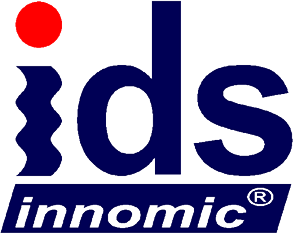Visit us on Youtube to see more practical videos
Order and tracking Analysis
What is an order analysis?
With the help of the order analysis but also the overrun analysis, especially speed-dependent vibrations of machines can be examined in detail.
The known frequency analysis shows the vibration amplitudes over the frequency and thus forms a frequency spectrum. The order analysis, on the other hand, records the amplitude values as a multiple of the RPM, the so-called orders. The spectrum is therefore also called order spectrum.
For example, if we look at a 2-pole asynchronous motor on a 50 Hz power supply, its speed is 3000 rpm. This is the first order. The second one is 6000 rpm, the third 9000 rpm and so on.
The great advantage of order spectra is that with changing speeds, lines of speed-synchronous vibrations do not change their position on the x-axis, while with an FFT the lines move.
In an order spectrum, it can be distinguished whether a vibration is speed-synchronous or has other excitation causes.
It is also advantageous that the signal sampling in order analysis is not carried out synchronously with the time, but at an angle. This means that instead of a time window, the number of revolutions to be collected is specified. In practice, this is achieved by the parallel recording of a rpm signal.
As a result, high frequency and amplitude accuracy can be achieved at changing machine speeds.
In VibroMatrix order analyses are performed in the InnoAnalyzer.
Practical example - Order analysis
Let us now look at practical examples. As already mentioned, a rpm sensor is required. Here it is a reflective light detector with the corresponding mark. We measure with one channel at a bearing block.
Order analysis is performed with the manual FFT mode of the InnoAnalyzer. Under the Display tab, you only need to change the frequency axis setting to "Order, Hz" or "Order, 1/min", depending on the desired speed unit.
The FFT tab expands to FFT/Order. The settings are essentially the same as for frequency analysis. Differently, the rotational frequency range and the desired number of orders to be displayed are entered here. To increase the resolution we set 50 revolutions for 1 spectrum. In addition, select the Hann window and the maximum overlap.
The machine model runs at maximum rpm. Let's start the order analysis. The first order has a high amplitude. Higher orders are negligible. This suggests an existing unbalance. However, there are also vibrations between the rpm orders, so-called interharmonics. It is not possible to determine whether these are related to the rpm until the rpm changes.
That's why we want to look at the run-out of the machine. To illustrate this, we clone the InnoAnalyzer and run a frequency analysis. We also display the current rpm in an InnoMeter. After switching off the machine, a approx. 40s run-out is carried out. The dominant 1st order decreases in amplitude.
In the frequency analysis, the declining speed can also be observed. However, the analysis is more difficult because the lines move along the x-axis.
If the lines stand still in the order spectrum at changing speeds, they are excited by the rotational speed, so-called speed-synchronous oscillations. Moving lines have a different excitation cause.
What is a tracking analysis?
In a tracking analysis, the magnitude and phase of a speed order is displayed above the changing machine rpm.To a certain extent, you take the speed line from the FFT and trace its amplitude.
Tracking analyses can take place during run-up or run-down. This allows a wide speed range to be recorded, the eigenfrequencies of machines and possible speed-dependent resonances of elastic rotors become visible.The tracking analysis can also be used to determine suitable speeds for balancing. The InnoAnalyzer Speed offers a wide range of options for carrying out tracking analyses.
Practical example Tracking analysis
The InnoAnalyzer Speed represents phase, magnitude and additionally the time above the rpm. It is possible to measure any orders, pre-filtered orders and vibration characteristics of different measured variables.
In the tab Measurement run you can determine whether only rising or falling or both directions of rotation are used, how high the speed resolution should be and in which speed range you need. Proposals for speed ramps are displayed on the right, with short or exact measurements depending on the weighting.
Only the maximum speed is changed to 3600 rpm, the instrument is started so that the run-up start.
At low rpm the curve is grey, indicating that only a few revolutions could be collected. From about 500 rpm there is a clear structure in magnitude and phase. The phase representation can be changed by right-clicking on the scale of the axis. A peak in the amplitude and a strong change in the phase curve indicate resonances. Two such natural frequencies can be clearly determined.
From approx. 1750 rpm the phase is constant and the amplitude increases linearly to the speed. This represents the typical 1st-order vibration generated by unbalance.
The order analysis also represents the passing through the resonance. In the run-out you can see the natural frequency moving to higher orders and when reaching the 1 order it is increased.
Suitable rpm for a balancing procedure of rigid rotors can always be found where the phase of the signal is constant. Here starting at 1750 rpm. In the best case, the rotor is balanced at operating speed, but if the vibrations generated by unbalance are so high that safe balancing cannot be guaranteed, the process must first be started at low speeds.
Order analysis offers an easy way to detect speed-frequency oscillations. This means that frequencies of vibrations can be reliably detected even at changing speeds, since the amplitudes maintain their position on the x-axis.
The tracking analysis quickly reveals resonance speeds of machines and is therefore an essential tool for determining suitable balancing speeds. Such critical speeds can also be avoided in the operation of machines.
The InnoAnalyzer and the InnoAnalyzer Speed offer you a wide range of analysis possibilities.



















 +49 (3901) 305 99 50
+49 (3901) 305 99 50